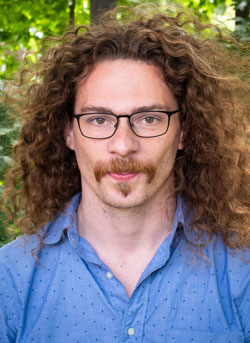Seminar by Daniel D'Orazio, Harvard
Towards Supermassive Black Hole Binary Demography
 The merger of two galaxies, each with a supermassive black hole (SBH) at its heart, results in the formation of a supermassive black hole binary (SBHB) at the center of the new galaxy. The eventual inspiral and merger of SBHBs generates gravitational waves that will be detectable by the space interferometer gravitational wave observatory LISA, and the Pulsar Timing Arrays. However, the steps between galactic merger and black hole merger are poorly understood. It is not even clear if most SBHBs will merge.
The merger of two galaxies, each with a supermassive black hole (SBH) at its heart, results in the formation of a supermassive black hole binary (SBHB) at the center of the new galaxy. The eventual inspiral and merger of SBHBs generates gravitational waves that will be detectable by the space interferometer gravitational wave observatory LISA, and the Pulsar Timing Arrays. However, the steps between galactic merger and black hole merger are poorly understood. It is not even clear if most SBHBs will merge.
To address this outstanding issue, commonly referred to as the “final parsec problem,” we must continue to model binary orbital evolution that results from environmental interactions, and, importantly, we must aim to find SBHBs during the compact, sub-parsec-separation stage of their lives. While identification of such a population is notoriously difficult, it would open the field of SBHB demography, elucidating the processes at play in galactic nuclei that facilitate (or hinder) SBHB mergers.
In this talk I will discuss numerical and analytical efforts to model SBHB accretion with the double pronged goal of 1) predicting unique electromagnetic signatures of binary accretion and 2) modeling the orbital response of a SBHB to interaction with a gas disk. I additionally discuss a few intriguing sub-parsec separation SBHB candidates.
